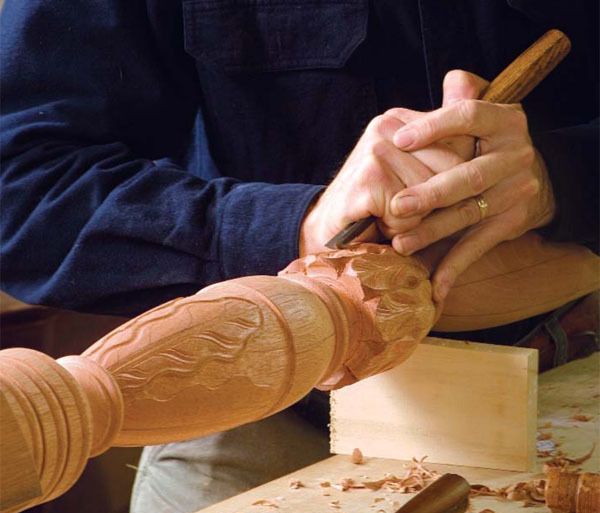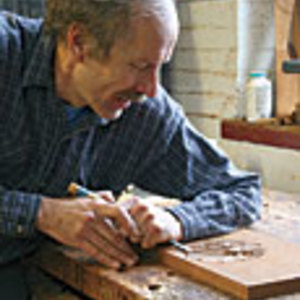Carving Leaves on a Turned Post
Once mastered, these techniques for carving leaves can be used to carve a variety of patterns on turned posts.

Synopsis: Two carving lessons by Allan Breed are the focus of this article. Working on a turned bedpost, Breed teaches readers how to carve two versions of corn leaves. Once mastered, these techniques can be used for carving a variety of patterns on turned posts.
From Fine Woodworking #172
The ability to carve in the round is useful not only on beds—the Federal example covered here—but also on table pedestals and legs, chair legs, chest columns, finials, clock columns, and other turned work. Often this type of carving is easier for the beginner because the cutting is done with the grain as one works downhill (from the larger diameter to the smaller).
Heavily carved bedsteads were less common in the Colonies than in Europe, where designers such as Chippendale and the team of Ince and Mayhew were concocting regal examples. In the Colonies, though, high-post bedsteads were nearly always plain, hidden by ornate bed hangings.
By the 1790s in the United States, neoclassical taste demanded more ornate bedposts incorporating fluted and beaded sections with leaves carved onto vase- or urn-shaped turnings.
I can’t cover all of the elements of this bedpost in one article, so I’ll focus my efforts on two carving lessons I think will prove the most useful. Both are leaves—two different versions of corn leaves. If you can master these, you will be able to move on to the more detailed acanthus leaves that fall between these sections. I’m assuming that if you tackle this post, you can handle the reeds and beads involved, or seek out past articles on these areas. (try FWW #163, p. 65, for a good way to form the reeds).
Nothing special about the turning: The turning on the post, or shaft, is conventional. In other words, I don’t make any allowance for the depth of the carving because the relief usually is quite shallow. I suspect that 18th- and 19th-century shops used the same turned posts for plain and carved pieces, making it easier to respond quickly to the taste and budget of the customer.
For stock, straight-grain wood will allow predictability and ease of carving. The more figured the wood, the more difficulty you’ll have getting clean surfaces. Also, because a carving places the focus solely on the interplay between light and shadow, setting it on a visually complex background is not a good idea. However, many of these beds had fancy veneer applied to the square, flat sections of the posts where it could be appreciated.
There are two turning tricks that will help later to allow a cleaner carving. First, for a clean transition at the base of the leaves, make an extra-deep score with the skew. This will allow the waste to break away cleanly when the base of the leaf is carved. Also, it is easier to undercut the end of the bell-shaped section on the lathe than it is when carving the tips of those leaves.
For the full article, download the PDF below:
Fine Woodworking Recommended Products

Tite-Mark Marking Gauge

Olfa Knife

Lie-Nielsen No. 102 Low Angle Block Plane








Log in or create an account to post a comment.
Sign up Log in